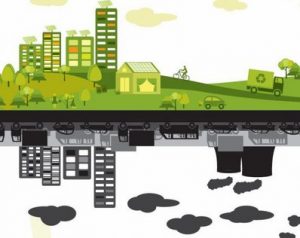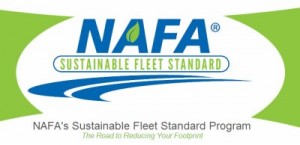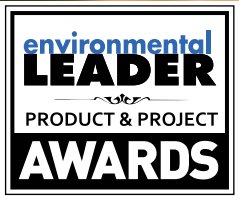This newsletter, Sustainable Future, joins Mobility Future as an occasional special edition to Green Auto Market on key trends shaping the future of clean transportation.
Sierra Club Executive Director Michael Brune released a horrible truth to the world yesterday — legendary founder John Muir and other early leaders were supporters of white supremacist causes; and Muir made incendiary, racist remarks attacking African Americans and Native Americans.
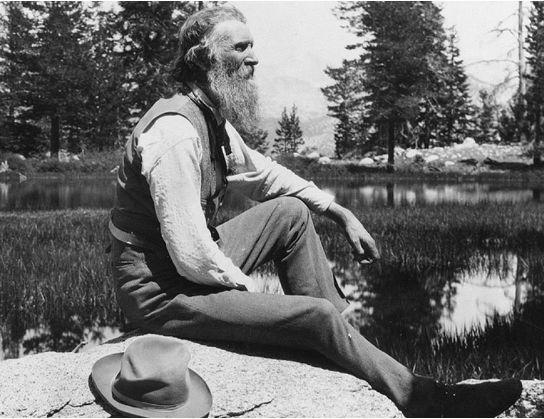 While championing the creation of national parks and conservancy of nature, Muir once referred to African Americans as lazy “Sambos,” an insulting racist term many consider to be as bad as the n-word. In another incident, while telling the story of a legendary hike from the Midwest to the Gulf of Mexico, Muir described Native Americans he encountered as “dirty.”
While championing the creation of national parks and conservancy of nature, Muir once referred to African Americans as lazy “Sambos,” an insulting racist term many consider to be as bad as the n-word. In another incident, while telling the story of a legendary hike from the Midwest to the Gulf of Mexico, Muir described Native Americans he encountered as “dirty.”
Muir and other early leaders were supporters of the eugenics movement, which advocated white supremacy through its pseudo-scientific theories. One of them, David Starr Jordan, served on the board of directors during Muir’s presidency. Jordan co-founded the Human Betterment Foundation, whose research and model laws were used to create Germany’s eugenics legislation under the rule of Adolph Hitler and the Nazi party.
Muir’s derogatory comments tapped into harmful racist stereotypes, though his views did evolve later in his life, Brune said. But the Sierra Club has to face historic protests over America’s racist legacy, and the taking down of statues representing historic Confederate leaders who had fought for the preservation of slavery.
“As the most iconic figure in Sierra Club history, Muir’s words and actions carry an especially heavy weight,” Brune wrote. “They continue to hurt and alienate Indigenous people and people of color who come into contact with the Sierra Club.”
Muir has been the iconic, historic figure in America’s ecology movement. Sierra Club was founded on May 28, 1892, in San Francisco by the Scottish-American preservationist, and continues on as the oldest grassroots environmental organization in the US. Muir was honored in a 2009 miniseries by historian Ken Burns, The National Parks — America’s Best Idea. Muir and President Theodore Roosevelt were credited for being the most influential leaders in establishing America’s national park system. Hikers know all about The John Muir Trail, a long-distance trail in the Sierra Nevada mountain range of California, passing through Yosemite, Kings Canyon, and Sequoia National Parks, carved out by the legendary hiker. Muir had worked hard for these trails and parks to be established.
Brune and other Sierra Club activists have known for years that the culture and membership of the environmental group had to change for its very survival. Those participating in club hikes and speaker events knew membership was dwindling and were made up in large part by aging, white men and women. Public outreach efforts to bring in a more youthful, diverse membership were starting to see positive results in the past five years, but the club had a long way to go.
Other environmental groups have seen their own shake-ups over issues of race and diversity. The issue had been raised years ago by African American and other minority employees over the lack of diversity in membership and the racial bias that persists in top and mid-level management. Ruth Tyson, an employee at the Union of Concerned Scientists, quit recently after having sent out a 17-page internal letter criticizing the organization’s casual indifference to black workers.
African Americans, Latinos, Asians, and Pacific islanders, have been especially hard hit in their residential communities by increasing air pollution since the 1950s. Climate change laws and funded initiatives in California and other states have been citing harm being done to “disadvantaged communities” as one of the fundamental reasons for improving air quality and fighting climate change.
Green groups are supporting these moves and other efforts to stop the Trump administration from completely dismantling America’s national parks and natural resources, environmental rules, and supporting innovation in clean energy and transportation. Coming to terms with racism and lack of true diversity will have to be resolved as expectations grow for change.
Sustainability still a top concern for consumers as COVID-19 continues, studies say
Global consulting firm PwC conducted a second edition of its annual consumer survey to study the impact of COVID-19 — with expectations of corporate sustainability still in the top ranks of concerns. In the study, 45 percent of global consumers say healthcare is one of their top reasons for living in a city; 69 percent are more focused on mental health and well being; and 43 precent expect businesses to be accountable for their environmental impact. The two surveys, taken before and after the pandemic broke and published earlier this month, shows that consumer trends and behavior in place before the pandemic are accelerating and show marketers what they’ll need to rethink how they’re doing business. It reflects the global trend that billions of people worldwide are living in cities — with a new era in global consumption, changing lifestyles, and much concern about sustainability and maintaining health in crowded cities.
The study showed most consumers have a clear sense of sustainability and a sense of civic duty. In survey results taken prior to the pandemic, 45 percent of the global respondents say they avoid the use of plastic whenever possible; 43 percent expect businesses to be accountable for their environmental impact; and 41 percent expect retailers to eliminate plastic bags and packaging for perishable items. Their sense of personal responsibility is present for many — with 20 percent choosing “me the consumer” web asked who were most responsible to encouraging sustainable behaviors in the city; 15 percent chose “the producer or manufacturer.”
When marketing to metro areas in the US, another study identified the top 10 sales for per capital spending on sustainability-marketed projects. The NYU Stern Center for Sustainable Business and IRI are following up their 2019 analysis, the CSB Sustainable Market Share Index, with new research examining consumer purchases of sustainability-marketed consumer packaged goods. These top 10 states are New Hampshire, Maine, Massachusetts, Vermont, Connecticut, Colorado, New Jersey, Delaware, Rhode Island, and Florida. If you were to look at state-wide purchases, California, Florida, Texas, and New York top the rankings. The bottom five states in per capita spending are Mississippi, Utah, Kentucky, Alabama, and Texas.
Consumer interest and spending on sustainable consumer-packaged goods (CPG) continues into this year. Sustainability-marketed products continued to grow with 16.8 percent dollar market share year-to-date, up 0.6 percentage points versus 2019. During the week ending March 15, 2020, when CPG sales peaked due to COVID-19, sustainability-marketed products experienced a 1.9 percentage points share increase (vs. the prior week), and dollar sales increased 56 percent during that same period. The categories that experienced the greatest share growth in sustainability-marketed purchases that week were paper products, weight control products, coffee, and soap.
From 2015 to 2019, sustainability-marketed products contributed 54.7 percent of overall CPG market growth, according to the study. It also represented 16.1 percent dollar share of the CPG category in 2019. As for demographics, consumers in upper incomes and with higher levels of education are more likely to buy sustainability-marketed products than other groups. Millennials are more likely to buy sustainability-marketed products. However, most sustainable purchases are attributed to Generation X and baby boomers due to the size of their age groups.
Electric vehicle sales have been stronger than expected, doing better than conventional vehicles in the troubled US auto market. In its second quarter earnings statement this month, Tesla reported delivering 90,650 vehicles to customers — far more than the roughly 70,000 that analysts had expected. In late June, the International Energy Agency reported that 2020 is on track to set a new record for electric vehicle penetration at 3 percent of total global car sales, up from 2.6 percent in 2019.
EVs are ahead of several other sustainable products, as consumers pass through their fear of the new technology and become more interested in the benefits of owning and driving a plug-in vehicle. These include removing tailpipe emissions, keeping fueling costs down and predictable, and hearing good news about the long-term longevity and reliability of electric powertrains.

 power its grid. Workers on the 500-megawatt Núñez de Balboa solar park have been wearing protective gear to finish installing the nearly 4 square miles of panels to supply power up to 250,000 people, becoming the largest in Europe.
power its grid. Workers on the 500-megawatt Núñez de Balboa solar park have been wearing protective gear to finish installing the nearly 4 square miles of panels to supply power up to 250,000 people, becoming the largest in Europe.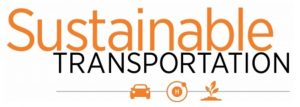 There’s one thing I can guarantee you about 2017: industry conferences and events are going to be very interesting.
There’s one thing I can guarantee you about 2017: industry conferences and events are going to be very interesting.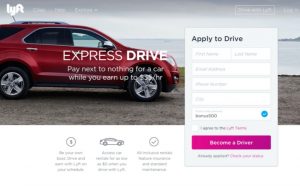 Advanced mobility continues to look tangible and coming sooner to market than it appeared a couple years ago. Google’s unveiling of its small fleet of self-driving cars for road tests in the Spring of 2014 triggered a flurry of debate about the launch of road-worthy automated cars by 2035. That timeline may be shortening to 10 years or less, at least for automated driving technologies coming to market.
Advanced mobility continues to look tangible and coming sooner to market than it appeared a couple years ago. Google’s unveiling of its small fleet of self-driving cars for road tests in the Spring of 2014 triggered a flurry of debate about the launch of road-worthy automated cars by 2035. That timeline may be shortening to 10 years or less, at least for automated driving technologies coming to market.